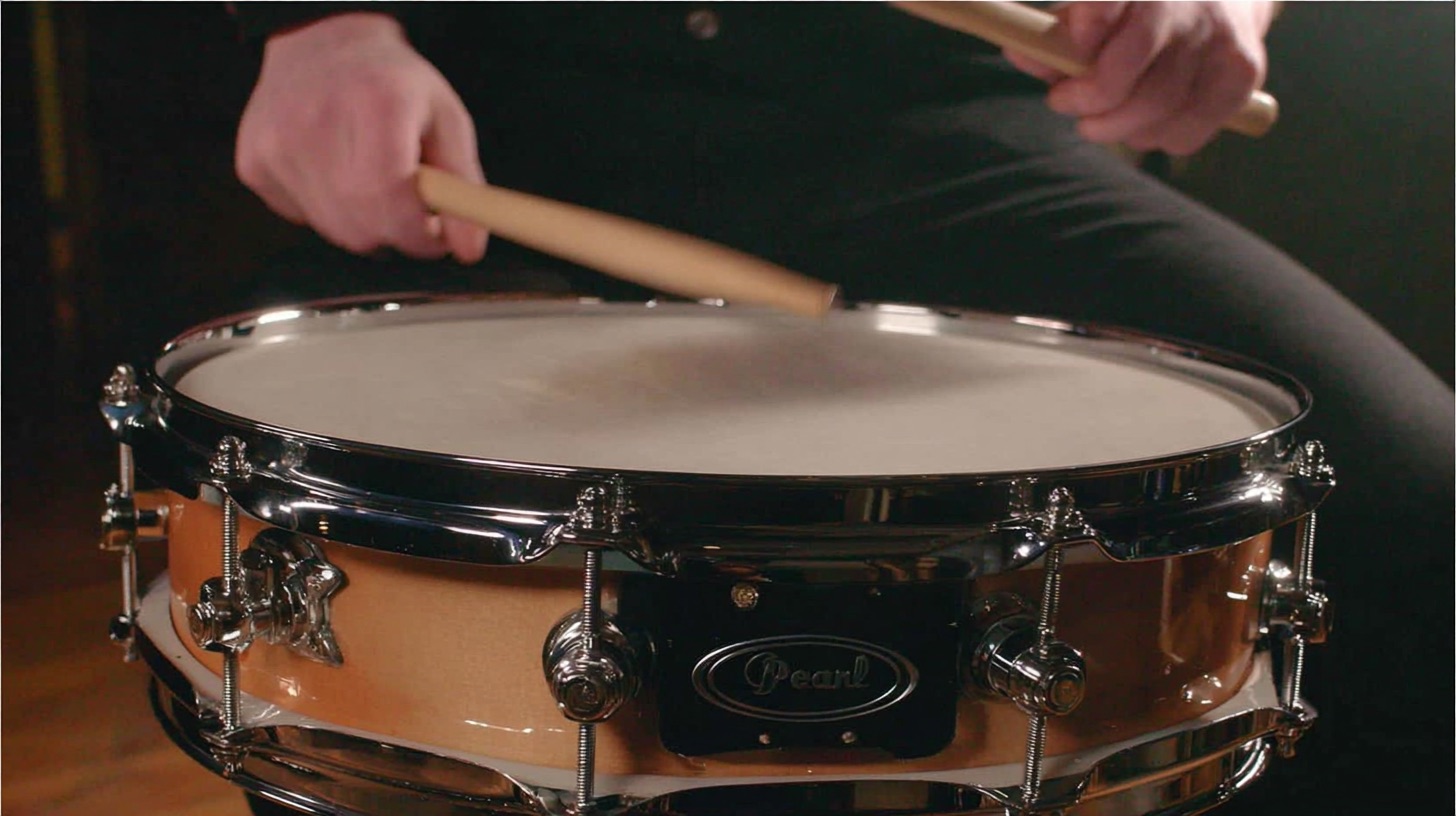
Mike Mangini: A monster of prog metal drumming
Nail The Mix Staff
Mike Mangini. The name alone conjures images of mind-bending polyrhythms, inhuman precision, and a drum kit that looks like it could launch into orbit. For us metal producers, hearing that kind of drumming on a track is both exhilarating and slightly terrifying. How do you even begin to mix drums played with such technicality and make every ghost note, every intricate fill, every cymbal splash pop in a dense metal mix?
It’s a serious challenge, but also a massive opportunity to elevate your production game. Forget just making drums loud; we're talking about achieving clarity, punch, and impact that does justice to a Mangini-level performance. Let’s dive into some approaches and specific techniques you can use.
The Foundation: Capturing Mangini-esque Precision
Before you even touch an EQ or compressor, getting the raw recording right (or dealing with what you’ve been given) is paramount. With a player like Mangini, every nuance matters.
Micing for Maximum Definition
If you're lucky enough to be tracking, or if you're working with exceptionally well-recorded drums, the mic setup is key. For Mangini’s style, where every drum and cymbal contributes, close mics are your best friends.
- Kick: Think an Audix D6 or Shure Beta 52A inside for beater attack and low-end punch, maybe a Neumann U47 FET or Yamaha Subkick outside for that extended sub thump.
- Snare: The classic Shure SM57 top and bottom is a go-to. A Beyerdynamic M201 on top can also offer a slightly different, focused character.
- Toms: Sennheiser MD421s are a studio staple for a reason – they capture the attack and body beautifully. Heil PR30s or Audix D2s/D4s are also solid choices. Given Mangini’s extensive tom arrays, you'll need plenty!
- Hi-Hats & Ride: Small diaphragm condensers like Neumann KM184s or AKG C451s will give you the articulation needed.
- Overheads: A spaced pair of quality large-diaphragm condensers (like AKG C414s or Neumann U87s) can capture the overall kit image and cymbal shimmer. Position them to get a balanced picture, focusing on cymbals without too much direct snare.
- Room Mics: Crucial for depth, but handle with care. You don't want a washy room sound smearing Mangini’s precision. Maybe a stereo pair further back, or even a mono mic compressed heavily (think a Coles 4038 or Royer R-121).
Phase Coherence is Non-Negotiable
With this many mics, phase is your arch-nemesis or your greatest ally. Misaligned phase will suck the life and punch right out of your drums, especially the kick and snare. Zoom in on your waveforms in your DAW (Pro Tools, Reaper, Logic Pro X, Cubase – they all have this capability) and nudge tracks to align the transients, particularly between close mics (e.g., kick in/out, snare top/bottom) and overheads/room mics relative to the snare. Tools like Sound Radix Auto-Align can be lifesavers here.
Shaping the Beast: EQing for Articulation and Power
Once your tracks are phase-aligned and balanced, it’s time to carve out space and enhance what’s there. For complex drumming, surgical EQ is often more effective than broad strokes. Check out our EQ strategies hub page for more foundational EQ concepts.
Kick Drum: The Engine of Complexity
You need both the deep thud and the sharp click to cut through.
- Sub Frequencies (40-80Hz): A boost here with something like a Pultec EQP-1A emulation (Waves PuigTec EQP-1A or Softube Tube-Tech PE 1C) can add serious weight.
- Boxiness/Mud (250-500Hz): This is often where the kick can clash with guitars and bass. A surgical cut here using FabFilter Pro-Q 3 with a moderate Q can clean things up immensely.
- Beater Attack (2-5kHz): A boost in this range brings out the click. Be careful not to make it too basketball-like. A shelf or bell curve works.
- High-Pass Filter: Usually somewhere between 30-40Hz to remove unnecessary sub rumble.
Snare: Cutting Through the Wall of Sound
The snare needs to be authoritative without being overpowering or thin.
- Body/Fatness (150-250Hz): A gentle boost here can add weight.
- Crack/Attack (3-7kHz): This is where the snap lives. An API 550A or SSL E-Channel strip plugin can add aggressive punch here.
- High-Pass Filter: Cut everything below 80-100Hz to remove kick bleed and low-end mush.
- Notch out Ring: If there’s an annoying ring, find the fundamental frequency with a narrow Q on your Pro-Q 3 and gently notch it out.
Toms: Making Every Fill Count
Toms in technical metal often fly by in flurries. They need to be distinct.
- Gating: Essential for cleaning up bleed. Use a gate with a fast attack and moderate release. FabFilter Pro-G is excellent for this, allowing you to fine-tune the range and hysteresis.
- Attack (5-7kHz): A boost here helps the stick hit cut through.
- Body (80-250Hz, varies per tom): Find the fundamental tone of each tom and give it a slight bump if needed.
- Low Mid Cuts (300-600Hz): Similar to the kick, cutting boxiness helps toms speak clearly.
Cymbals & Overheads: Air and Space, Not Harshness
You want shimmer and detail, not ear-piercing sizzle.
- High-Pass Filter: Crucial. Filter up to 300-500Hz on overheads to remove low-end build-up from the kit. For spot-miked cymbals, you might go even higher.
- Taming Harshness (2-5kHz): If cymbals sound clangy or overly aggressive, a gentle, narrow dip in this region can help. Dynamic EQ (like in Pro-Q 3) can be great here, only cutting when the harshness pokes out.
- Air (10kHz+): A gentle high shelf boost with something like a Maag EQ4 can add expensive-sounding air, but be subtle.
Controlling the Dynamics: Compression That Serves the Performance
With a dynamic player like Mangini, compression needs to enhance, not squash. The goal is consistency and punch, maintaining the excitement. For a deeper dive into metal compression, our metal compression secrets hub page is a great resource.
Individual Drum Compression: Enhancing Punch
- Kick: Medium attack (10-30ms) and medium release (50-150ms) to let the transient through and then clamp down. An 1176-style FET compressor (like the Waves CLA-76 or Arturia Comp FET-76) on a faster setting can add aggressive click, or an API 2500 style for punch. Aim for 3-6dB of gain reduction.
- Snare: Often a faster attack (1-10ms) to shape the initial transient, and a release timed to the music. The Empirical Labs Distressor is a monster on snare – try the "Nuke" setting in parallel or more subtle settings like 6:1 with medium attack/release.
- Toms: Similar to the kick, but often with a slightly faster release to get out of the way before the next hit in a fast fill.
Drum Bus Compression: Gluing it Together
After individual processing, subtle bus compression helps the whole kit feel like one instrument.
- Settings: Slow to medium attack (30ms+), auto or medium release, low ratio (2:1 or 4:1).
- Goal: Aim for just 1-3dB of gain reduction on the loudest hits. This isn't for smashing; it's for cohesion.
- Plugins: SSL G-Master Buss Compressor (Waves or Plugin Alliance) is a classic. The Cytomic "The Glue" is also fantastic.
The Role of Transient Shapers
Sometimes, even with careful compression, you might lose a bit of attack. Transient shapers are perfect for reintroducing or enhancing that initial crack.
- Application: Use on kick, snare, or even toms after compression if they feel a bit soft.
- Tools: SPL Transient Designer (hardware or plugin), Native Instruments Transient Master, Waves Smack Attack. A little goes a long way. Add 1-3dB of attack.
Beyond the Individual Hits: Samples, Triggers, and Ambience
In modern metal, especially with highly technical drumming, samples are often part of the sound.
Strategic Sample Reinforcement
Don't think of it as replacing, think of it as enhancing.
- When & Why: If the kick lacks consistent sub, or the snare needs more crack in fast passages, blending in a sample can work wonders.
- Tools: Slate Trigger 2 or Drumagog are industry standards. Choose samples that complement the original drum tone. GGD Modern & Massive or the Joey Sturgis Tones drum samples are killer for this. Blend them underneath the real drums.

100+ Insanely Detailed Mixing Tutorials
We leave absolutely nothing out, showing you every single step
Reverb & Room: Creating Space Without Smearing
You need space, but a massive cathedral reverb will turn Mangini's fills into mush. The goal is creating space without smearing.
- Short & Tight: Think small rooms, plates, or non-linear reverbs. ValhallaRoom or Valhalla VintageVerb offer tons of control. Try a short plate (0.8-1.2s decay) on the snare.
- Bus Reverb: Send a bit of the whole kit (minus kick, usually) to a short room reverb to give it a sense of shared space.
- Careful with Room Mics: Blend your natural room mic tracks carefully. You might compress them heavily (the "Bad Bonham" trick using an 1176 on all buttons in) and tuck them underneath for vibe, or use them more naturally for a sense of space.
Learning from the Masters
Deconstructing and mixing drums played with the precision and complexity of Mike Mangini is a huge undertaking. It requires a deep understanding of mic techniques, EQ, compression, and how all these elements interact in a dense metal mix. The techniques above are solid starting points, but hearing how seasoned pros tackle these challenges on real-world sessions is invaluable.
Imagine getting the actual multi-tracks from a killer metal song and watching the original producer mix it from scratch, explaining every plugin choice, every EQ move, every compression setting. That's exactly what Nail The Mix offers. If you're serious about taking your metal productions to the next level and learning how to make every element, from intricate drums to crushing guitars, sit perfectly, you need to check this out. Unlock Your Sound: Mixing Modern Metal Beyond Presets and see how you can learn directly from the best in the business. It’s about understanding the why behind the techniques, not just copying settings.
Get a new set of multi-tracks every month from a world-class artist, a livestream with the producer who mixed it, 100+ tutorials, our exclusive plugins and more
Get Started for $1




